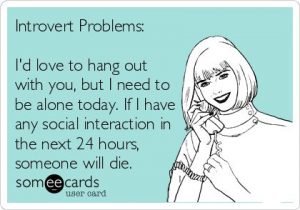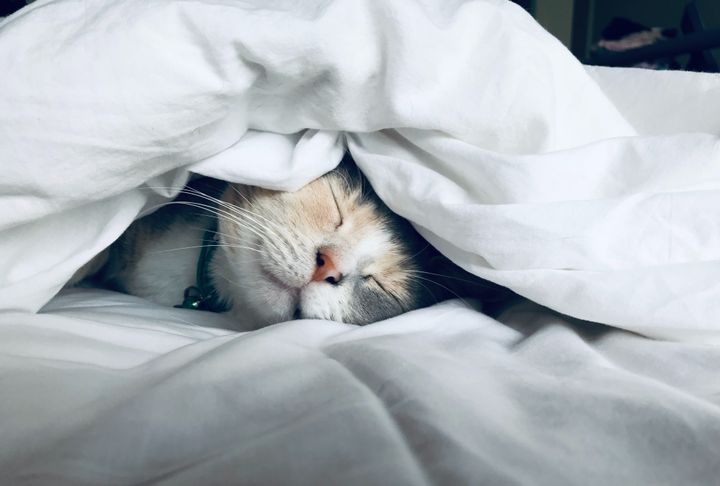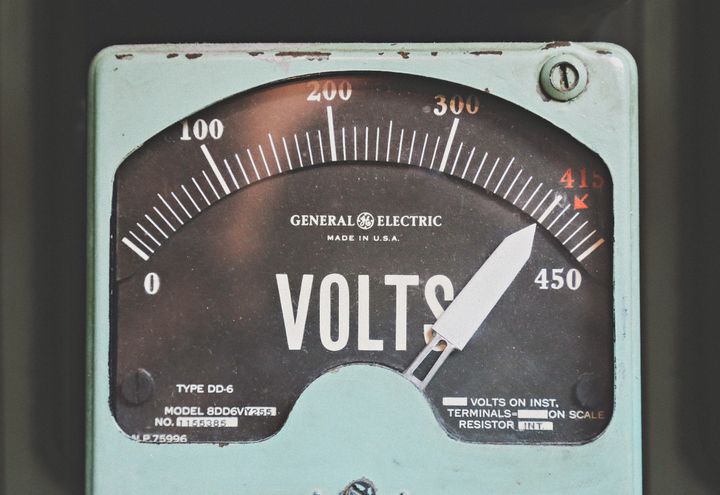An Introverts Guide to Maximizing Energy Through Intention
Learn tactics to maximize your energy through intentional decisions about who you spend time with and how you plan your week.

****I wrote a significant update and revision to this article and republished it in 2021. I recommend reading the new version: The Introverts Guide to Increasing Energy.***
I mention introversion in several of my past posts including:
- Know Yourself, Manage Better: Part 2 – Introversion vs. Extroversion
- The Learned Entrepreneur
- Everyone’s a Vampire: Being an Introvert in an Extroverted World

In their simplest definition, introversion and extroversion are not about how outgoing you are but rather where you get your energy from and what drains energy. Extroverts get their energy from being around people and find being alone draining. Introverts are the opposite and find being around people energy-draining and recharge their energy from being alone.
Understanding which end of the introversion/extroversion spectrum you lean towards can have a significant impact on how you plan your interactions. Which, in turn, impacts how you feel.
North American culture is generally built around the tendencies of extroverts. Understanding that I was introverted gave me the opportunity to identify tactics to maximize my energy and take care of myself.
These are some tactics for those of you who think you lean towards introversion to help you get the most out of your energy:
Identify if you are introverted or extroverted
I didn’t always know I was introverted. It’s only been in the last five years that I was able to identify a label for how I felt after being around people and at events all the time. I find that being around others, regardless of how much I like them, drains my energy. This can be challenging given that my role requires that I spend much of my time in meetings, at conferences, public speaking, and networking at business events.
One of the ways that helped me realize I was introverted was actually personality tests. While I think they need to be taken with a grain of salt, they are valuable in giving context and labels to your tendencies. I am most familiar with the Myers-Briggs Type Indicator which you can try for free or do an official paid version. They are not hard and fast rules, but they can help clarify things like how you tend to make decisions, interact with others, communicate, and if you lean towards introversion or extroversion. Personality tests can be used as a tool for self-reflection. They give a framework for thinking about yourself which can help you make decisions around how you approach different parts of your life.
Be intentional about WHO you give your energy to

One of the ways to apply the knowledge of being introverted is to think about the people you interact with regularly and how you feel after you have been around them. Some people and situations are more energy-intensive than others. This isn’t a bad thing, just something to be aware of. You only have some much energy to give each day. If you are not conscious of your energy levels and fill up your tank, then you wake up each day lower and lower…until you are running on fumes.
1. SURROUND YOURSELF WITH THE RIGHT PEOPLE
People who are challenging to be around will take more energy so you need to decide if you want to have them in your life, and how often. I describe my approach to thinking about who you surround yourself in my post, How to Find and Partner with the Right People: A Venn Diagram for Life. How much energy a person takes is only one facet of the concept, but a good starting point for considering WHY you spend time with someone, the value you bring to each other, and if they are high energy takers.
It makes sense to focus as much of your energy as possible on the people you identify as your “Right People” and reduce your interactions with people who are not.
2. SET GOALS AROUND WHICH ORGANIZATIONS/ROLES/EVENTS YOU WANT TO INVEST YOUR ENERGY IN

If you volunteer for a community league, church, social service, board, etc, they will all require different kinds of commitment, and different levels of energy. Think about why you are involved with them, what you can give them, and what you want to get back. If you set goals around what you want out of the engagement, you can evaluate if they are good investments of your energy.
For example, if you are a volunteer for a community organization where you often work at events that include tasks like selling tickets or working a booth, you will have a ton of interactions which would be draining for an introvert. That might be fine, but you could consider alternative ways to give time to the same organization like being on their board, which meets once a month and is likely a small group.
Be intentional about WHEN you give your energy by taking control of your calendar
Many of us are ruled by our weekly calendars. There are projects to stay on top of and meetings to attend. Depending on the nature of your work, you will have varying control over what your schedule looks like. You will likely have more control over your social/familial calendar. Take control where you can by considering the following:
1. LISTEN TO YOUR BODY AND FIGURE OUT THE TIMES OF DAY YOU ARE MOST EFFECTIVE AT ALONE TASKS VERSUS TASKS THAT INVOLVE OTHERS.

There are consistent times of day that I can sit at my desk and work away for several hours. There are also consistent times of day that I check my social media and email every 5 seconds and cannot focus for the life of me. I know mornings are generally my best time for focused work at my desk. I like to take meetings in the afternoon when I have my worst alone focus because they require a different kind of energy.
When are yours? When do you tend to feel like you are at your highest energy? When do you tend to feel at your lowest energy?
A way to monitor this is by spending a week or two reflecting each day on how you felt throughout the day and what was happening. Write it down and see if a pattern forms.
2. LISTEN TO YOUR BODY AND FIGURE OUT HOW MANY INTERACTIONS, AND WHAT TYPE, YOU CAN HANDLE WITHOUT BURNING YOURSELF OUT.

I know that large group events take more energy for me that one-on-one meetings. I also know that if I schedule too many meetings in a day, I shouldn’t even bother going to an evening event because I will be totally disengaged.
Think about:
- What type of interactions take the most energy from you? Group? Individual? Large events?
- How many interactions can you have in a day and still be effective?
Add these to your reflections because the answers to these will help you think more about how much you schedule each day.
3. BOOK YOUR WEEK WITH INTENTION.
When you know when and how many interactions you can have and still feel good, it will help you map out your week on your calendar.

- Book the meetings/dinners/events/kids activities/volunteer commitments etc. you know about in your calendar so you have a visual of where your time is already committed.
- Book downtime each week so that you are not overbooking yourself. I have a DO NOT BOOK in my calendar so that I build in recovery time into my schedule. It might be an evening for me to read at home with my cats or a slot in my morning to work at my desk undisturbed, but having it blocked off keeps me for booking other things.
- For the meetings you do not have control over, see if you can set breaks or alone time after/between them to give yourself a bit of recovery time. For example, I was at a three-day conference with activities scheduled from 7 am to 10 pm (and beyond). I made sure that during the few breaks that were built into the day I went back to my room to have a 20 min power nap to keep my energy up so I could engage fully throughout the day.
We have more control over our schedules than we think. We just have to take the time to be intentional and make decisions about when we commit our time.
Summary
Understanding where you get your energy will help you make intentional decisions about who you spend time with, where you spend your spare time, and how you plan your week.
****I wrote a significant update and revision to this article and republished it in 2021. I recommend reading the new version: The Introverts Guide to Increasing Energy.***
Share
Ashley Janssen

Productivity consultant, writer, speaker, serial entrepreneur, chaos calmer, introvert, cat-lady. Lover of books, fitness, old fashioned’s, basketball, and video games.
Follow me on
Twitter
or
LinkedIn.
Hire me for
1 on 1 productivity consulting
or
speaking.
Related articles

5 Ways For Introverts To Keep Their Social Battery Charged

The Introverts Guide to Increasing Energy


Comments ()